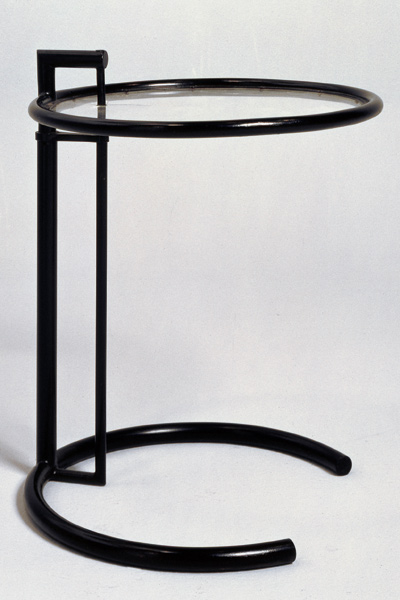The Anglo-Irish designer Eileen Gray keeps on being rediscovered but she remains a puzzle. The nub of the Gray ‘problem’, which her last large retrospective at the Design Museum in 2005 failed to answer, is this: how did the author of some of the most sensual, disturbing interior design and furniture of the 1910s and 1920s become an uncompromising modernist whose preferred materials were tubular steel, aluminium, plywood and celluloid?
Of course artists do reinvent themselves — designers and architects more than most. Careers have odd trajectories that upset linear histories of art. Gray studied at the Slade and had she stayed in England her interest in applied art might have led her to the amateurish Omega Workshops or to her friend Wyndham Lewis’s short-lived Rebel Art Centre. But she moved to Paris where her work was shaped by a very particular milieu and where she had access to highly skilled artisans and craftsmen.
At the Pompidou Centre the panels and screens decorated with Beardsley-esque figures, the camp neoclassical consoles and the knowingly primitivist low tables and massive bowls that fill the first rooms of the exhibition were chiefly made for a wealthy group of exquisites, elegant Sapphists kitted out in tweeds, silk cravats and furs. They became her closest friends, clients and collaborators and her famous brick screens (lacquered panels pivoting on brass rods) and her dark interiors pay homage to that secretive, sophisticated world.
But there was always an architectonic quality to her work that, as this show successfully demonstrates, could translate into something quite other. Her remarkable rugs, well represented at the Pompidou Centre, look like ground plans for utopian buildings and her famous Transat chair employed luxurious art moderne materials while being rigorously modernist in conception. Biography is key to her development. She fell in love, in a characteristically ambigu way, with Jean Badovici, a Romanian architect and founder editor of the journal L’Architecture Vivante.
In 1926, with her money, Gray and Badovici decided to build une maison de vacances, on a dramatic site that she found at Roquebrune in the South of France. E 1027 (a coded reference to both their names) was built to advertise their joint talents but Gray seems to have been the principal architect as well as designing the interior furnishing and subtle lighting. With a flat roof, ribbon windows, mounted on pilotis, E 1027 was the embodiment of Modern Movement purity.
She was to build only one other house, in 1935. Tempe a Pailla near Menton was designed for Gray alone. She furnished it with a new body of work — startlingly original minimalist furniture in modest materials. She now saw herself as an architect — a left-wing, socially committed architect at that. But she was 67 when the second world war ended and no one gave her a chance to realise her plans for cultural centres and working men’s clubs. Being a woman did not help. And in an absurdist twist, the creation of which she was most proud, E 1027, had been violated just before the war when Le Corbusier painted large murals inside and outside the house while staying with Jean Badovici. His obsessive, envious interest in E 1027 is a curious subplot in the Gray story.
But while Le Corbusier went from strength to strength, Gray’s career evaporated. She had to wait until 1968 to be ‘re-discovered’ by the architectural historian Joseph Rykwert. She was still a force to reckon with in the 1970s, writing feisty letters on art to her niece, the painter Prunella Clough, and telling a young Bruce Chatwin to go to Patagonia — ‘Allez-y pour moi!’ Since her death in 1976, an Eileen Gray industry has sprung up and currently an unlikely-sounding feature film starring Winona Ryder is in the pipeline. Meanwhile the Pompidou Centre exhibition, with a catalogue full of illuminating essays, convincingly presents Gray as the creator of a series of Gesamtkunstwerk that chart the changing social and artistic mores of the 20th century. Irritatingly, the newly restored E 1027 at Roquebrune-Cap-Martin will not open until this autumn, some months after this fine show has left its Paris venue.






Comments